What Is Sase? Secure Access Service Edge represents a transformative approach to network security, and at WHAT.EDU.VN, we’re here to break it down for you. This cloud-native architecture converges networking and security functions into a unified service, delivering enhanced protection and streamlined management. Let’s explore how SASE can revolutionize your organization’s network infrastructure, providing secure access and data protection. Discover its architecture, components, benefits, and practical use cases while understanding the importance of network security.
1. Why Businesses Need SASE in Today’s Landscape
Businesses today face a dramatically different landscape than the traditional, centralized IT environments of the past. Increased cloud adoption, widespread mobile access, and the rise of remote work have decentralized both data and users, rendering traditional perimeter-based security models obsolete. That’s where Secure Access Service Edge (SASE) comes in. SASE addresses modern security and connectivity demands head-on, providing a comprehensive solution for today’s distributed workforce.
SASE integrates crucial security services directly into the network fabric, allowing security teams to efficiently manage every access request, regardless of the user’s location. This unified approach simplifies administration and enhances security through consistent, real-time threat prevention and data protection across all environments. As organizations continue their digital transformations, SASE’s flexibility and scalability make it indispensable for safeguarding distributed resources.
2. Understanding SASE Architecture: A Deep Dive
Secure Access Service Edge (SASE) architecture combines networking and security as-a-service functions into a single, cloud-delivered service at the network edge. This enables organizations to support dispersed remote and hybrid users by connecting them to nearby cloud gateways, eliminating the need to backhaul traffic to corporate data centers.
This architecture provides consistent secure access to all applications while giving security teams full visibility and inspection of traffic across all ports and protocols. By transforming the perimeter into a consistent set of cloud-based capabilities, SASE simplifies management and reduces complexity, offering a more streamlined alternative to traditional, disparate security appliances. The cloud-based nature of SASE allows for a dynamic, high-performing network that adapts to changing business requirements, the evolving threat landscape, and new innovations.
3. Key Components of a SASE Framework
Five essential technologies form the foundation of Secure Access Service Edge deployments:
- Secure Web Gateway (SWG)
- Firewall as a Service (FWaaS)
- Cloud Access Security Broker (CASB)
- Zero Trust Network Access (ZTNA)
- Software-Defined Wide Area Network (SD-WAN)
3.1 Secure Web Gateway (SWG)
A Secure Web Gateway (SWG) acts as a critical line of defense between users and the internet, providing URL filtering, SSL decryption, application control, and threat detection and prevention for user web sessions.
3.2 Firewall as a Service (FWaaS)
Firewall as a Service (FWaaS) delivers a cloud-native, next-generation firewall, offering advanced Layer 7 inspection, access control, threat detection and prevention, and other essential security services.
3.3 Cloud Access Security Broker (CASB)
A Cloud Access Security Broker (CASB) oversees sanctioned and unsanctioned SaaS applications and offers malware and threat detection. As part of a Data Loss Prevention (DLP) solution, it ensures visibility and control of sensitive data in SaaS repositories.
3.4 Zero Trust Network Access (ZTNA)
Zero Trust Network Access (ZTNA) provides continuous verification and inspection capabilities. It delivers identity-based and application-based policy enforcement for access to an organization’s sensitive data and applications.
3.5 SD-WAN
An SD-WAN provides an overlay network decoupled from the underlying hardware, enabling flexible, secure traffic routing between sites and direct internet access.
4. Practical Use Cases for SASE Implementation
The primary use cases for SASE include:
- Powering Hybrid Workforces
- Connecting and Securing Branch and Retail Locations
- Supporting Cloud and Digital Initiatives
- Global Connectivity
- MPLS Migration to SD-WAN
4.1 Powering Hybrid Workforces
For the hybrid workforce, a cohesive approach to network performance and security is crucial. SASE emphasizes scalability, elasticity, and low latency, catering directly to this need.
Its cloud-based framework optimizes application-specific performance, while integrated Digital Experience Monitoring (DEM) offers precise visibility into factors affecting user experience. By combining networking and security, SASE enhances threat monitoring and detection, filling security gaps and streamlining network governance.
4.2 Connecting and Securing Branch and Retail Locations
SASE is vital for organizations using SaaS and public cloud services, addressing performance and security challenges. Next-generation SD-WAN optimizes bandwidth and ensures dynamic security, outperforming traditional data center approaches.
The integration of DEM enhances user experience, reduces network and security expenses, and streamlines vendor management. SASE strengthens data security for branch and remote locations by enforcing consistent policies, simplifying management, and applying Zero Trust principles.
4.3 Supporting Cloud and Digital Initiatives
SASE is pivotal for cloud and digital transformation. As organizations lean into SaaS, seamless and secure connectivity becomes increasingly important. Security consolidation eliminates the limitations of hardware-based approaches, enabling integrated services and optimized branch deployments.
Advanced SD-WAN techniques expand bandwidth and provide deeper network insights, enhancing operations and application performance. AI and ML-based security features significantly improve threat detection, while dynamic firewalls offer a comprehensive approach to content analysis. Secure protocols adeptly manage data streams from IoT devices.
4.4 Global Connectivity
SASE enhances global connectivity by linking users directly to a global network, bypassing the need to route traffic through centralized data centers, reducing latency, and improving access speeds.
This relies on a distributed network of cloud-based Points of Presence (PoPs) strategically located worldwide. Users connect to the nearest PoP, minimizing data travel distance, speeding up connectivity, and ensuring consistent network performance and reliability across all locations.
4.5 MPLS Migration to SD-WAN
Migrating from MPLS to SD-WAN through SASE is a strategic move for many organizations due to the high cost and inflexibility of traditional MPLS networks.
SASE provides an efficient pathway to a more scalable, cost-effective SD-WAN architecture by using the internet to create secure, high-performance network connections. This allows for the use of broadband internet connections, which are far less expensive and more flexible than MPLS links.
5. The Core Benefits of Implementing SASE
The benefits of SASE extend to various aspects of networking and security, providing:
- Visibility across hybrid environments: SASE offers visibility into hybrid enterprise network environments, including data centers, headquarters, branch and remote locations, and public and private clouds, accessible from a single pane of glass.
- Greater control of users, data, and apps: By classifying traffic at Layer 7, SASE eliminates the need for complex port-application research and mapping, enhancing application visibility and control.
- Improved monitoring and reporting: SASE consolidates monitoring and reporting into one platform, enabling networking and security teams to correlate events and alerts more effectively, streamlining troubleshooting and incident response.
- Reduced complexity: SASE simplifies networking and security by moving operations to the cloud, reducing operational complexity and costs.
- Consistent data protection: SASE prioritizes consistent data protection across all edge locations by streamlining data protection policies and addressing security blind spots and policy inconsistencies.
- Reduced costs: SASE enables organizations to extend their networking and security stack to all locations cost-effectively, often reducing long-term administrative and operational costs.
- Lower administrative time and effort: SASE’s single-pane-of-glass management reduces the administrative burden, decreasing the time and effort required to train and retain networking and security staff.
- Less integration needs: By combining multiple networking and security functions into a unified cloud-delivered solution, SASE eliminates complex integrations between different products from various vendors.
- Better network performance and reliability: SASE improves network performance and reliability by integrating SD-WAN capabilities that support load balancing, aggregation, and failover configurations for various links.
- Enhanced user experience: Digital Experience Monitoring (DEM) facilitated by SASE optimizes operations and enhances user experiences across locations, without needing additional software or hardware installations.
6. Potential Implementation Challenges and How to Overcome Them
While SASE offers numerous advantages, potential implementation challenges include:
- Redefining team roles and collaboration: SASE implementation requires a re-evaluation of roles within IT, especially in hybrid cloud setups. Enhanced collaboration between networking and security teams is essential.
- Navigating vendor complexity: SASE’s ability to combine various tools and methodologies can help organizations navigate the complex landscape of point products and security tools.
- Ensuring comprehensive coverage: SASE offers a consolidated approach, but certain scenarios may require a mix of cloud-driven and on-premises solutions to ensure seamless networking and security.
- Building trust in SASE: Some professionals remain wary of transitioning to SASE, particularly in hybrid cloud scenarios. Engaging with reputable SASE providers who have established credibility is crucial.
- Product selection and integration: Deploying SASE might involve selecting and integrating multiple products to cater separately to networking and security needs, ensuring complementary functionality for streamlined operations.
- Addressing tool sprawl: Transitioning to a cloud-centric SASE model may render certain existing tools redundant. Identifying and mitigating these redundancies is essential for a cohesive technological infrastructure.
- Collaborative approach to SASE: The success of SASE implementation relies on collaborative efforts of both security and networking professionals, ensuring SASE components align with broader organizational objectives.
7. Choosing the Right SASE Provider: What to Look For
Choosing a SASE provider is a strategic decision impacting your organization’s network security and operational agility. Here’s how to make an informed choice:
- Evaluate integration capabilities: Select a provider offering a truly integrated solution rather than a bundle of disparate services.
- Assess the global reach of the provider’s network: Look for providers with a broad network of Points of Presence (PoPs) to reduce latency and ensure reliable, fast access to network resources.
- Consider the scalability and flexibility of the solution: Inquire about the provider’s capacity to handle increased traffic and manage network expansions.
- Verify Zero Trust and continuous security capabilities: Ensure the solution incorporates real-time, context-based policy enforcement and continuously assesses the security posture of devices and users.
- Check compliance and data protection features: Review the provider’s compliance certifications and ensure their solution helps adhere to industry regulations.
- Evaluate the provider’s performance and reliability guarantees: Opt for providers offering financially backed Service Level Agreements (SLAs).
- Analyze the ease of management and operational visibility: Ensure the solution offers a centralized dashboard for monitoring and managing the distributed network.
- Consider vendor reputation and customer support: Research customer reviews, case studies, and assess the responsiveness of the provider’s support team.
8. Six Steps to a Successful SASE Implementation
Implementing SASE effectively requires a structured approach and a keen focus on collaboration and strategic planning. Here’s a six-step process:
- Step 1: Foster team alignment and collaboration: Networking and security teams must collaborate closely, combining their strengths for a unified goal.
- Step 2: Draft a flexible SASE roadmap: Integrate SASE progressively, aligned with IT initiatives and business goals, collaborating with vendors or MSPs to ensure adaptability.
- Step 3: Secure C-Suite buy-in: Highlight the benefits, stress the ROI, and underscore the reduced need for multiple vendors, emphasizing comprehensive security.
- Step 4: Establish a plan: Clearly determine SASE objectives tailored to your organization’s unique challenges, analyzing the existing network setup and identifying areas for improvement.
- Step 5: Select, test, and deploy: Identify and onboard SASE solutions compatible with existing technologies, testing them in a controlled environment before full-scale deployment.
- Step 6: Monitor, optimize, and evolve: Maintain strong support mechanisms, continuously evaluating the SASE setup and adjusting based on feedback, emerging tech trends, and shifting organizational needs.
9. Debunking Common SASE Myths
There are still many misconceptions and myths about SASE. Let’s clarify a few common ones:
- SASE is a cloud-based VPN: SASE provides a comprehensive suite of network and security services beyond a traditional VPN.
- SASE is just a slight improvement on SD-WAN: SASE marks a fundamental change in integrating cloud networking and security, not just an SD-WAN upgrade.
- Only large corporations benefit from SASE: Businesses of all sizes can harness the advantages of SASE.
- SASE solutions are exclusive to remote work environments: SASE benefits both remote and in-office infrastructures.
- SASE compromises on-premises security for cloud advantages: Organizations can integrate SASE solutions with on-premises systems.
- Adopting SASE means foregoing other essential security technologies: SASE integrates with, rather than replaces, adjacent security tools.
10. How SASE Integrates with Complementary Technologies
SASE’s flexible architecture makes it versatile across various applications and environments, integrating particularly well with systems supporting cloud-based and distributed network architectures.
10.1 SASE and 5G Integration
5G revolutionizes mobile networks with speed and reduced latency. SASE offers a centralized security framework tailored for the dynamic nature of modern networks.
10.2 IoT and SASE Integration
SASE is adept at handling IoT’s distributed nature, offering centralized policy control and streamlining data routing and safeguarding.
10.3 Data Protection with SASE and DLP
SASE combines DLP and advanced security within a unified cloud-native framework, allowing precise security policies to be applied directly to data as it moves across networks.
11. SASE vs. Other Security and Technology Solutions
| Feature | SD-WAN | SASE | CASB | ZTE | ZTNA | SSE | Traditional Network Security | Firewall | Zero Trust | VPN |
|---|---|---|---|---|---|---|---|---|---|---|
| Integration of Networking and Security | Limited; primarily focuses on connectivity | Comprehensive; integrates networking with a broad range of security services | Limited to cloud applications | Integrates networking with cloud-centric security | Part of the broader SASE framework | Focuses on security, less on networking | Separate; traditional setups do not integrate both | Limited; mainly filters traffic | Security approach that can be part of broader solutions | Primarily provides secure network access |
| Deployment Focus | Branch office connectivity | Seamless connectivity across various environments | Security for SaaS applications | Amalgamation of network features and cloud-centric security | Specific security model focusing on access control within SASE | Security services like SWG, CASB, and ZTNA without networking elements | Based on a fixed, secure perimeter typically within physical premises | Acts as a network gatekeeper | Ensures that every access request is authenticated and authorized | Secure connections through centralized servers |
| Primary Benefit | Optimizes and manages distributed network connections | Secure and optimized connectivity for diverse environments | Extends security to cloud-based deployments | Focus on Zero Trust as a comprehensive service | Ensures rigorous validation of access requests | Streamlines various security measures under one control | Relies on physical hardware and location-based defenses | Controls traffic based on predefined rules | No implicit trust; rigorous continuous verification | Encrypts connections to protect data in transit |
| Suitability for Modern Work Environments | Suitable for traditional office setups | Highly suitable for remote and dispersed teams | Suitable for organizations heavily using SaaS | Suitable for organizations adopting a Zero Trust framework | Integral to secure remote access in modern work environments | Addresses security in edge and remote environments | Less suitable due to fixed perimeter becoming redundant | Basic traffic filtering less suitable for complex digital landscapes | Essential for ensuring security in decentralized networks | Suitable but can introduce latency due to central server reliance |
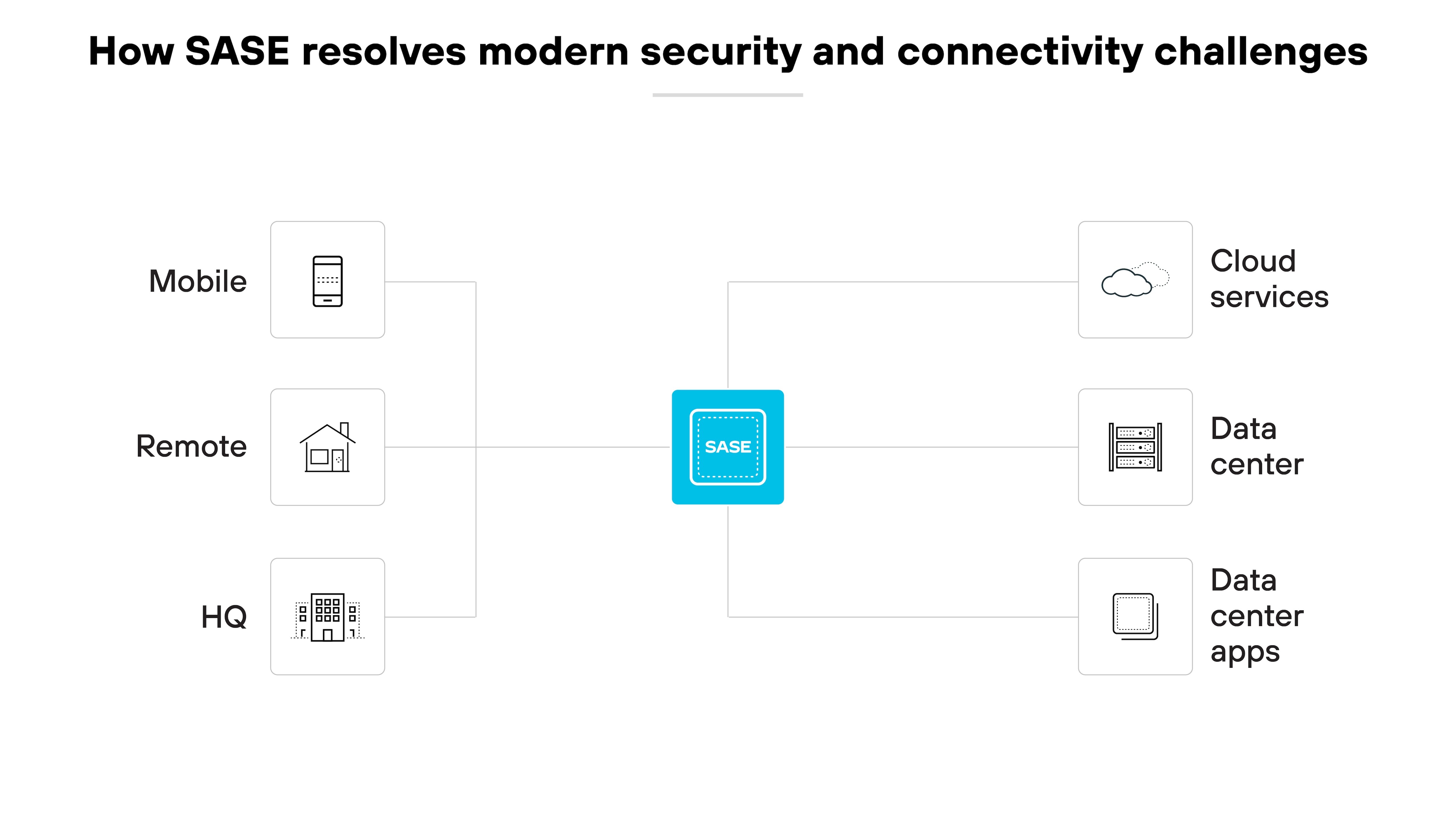
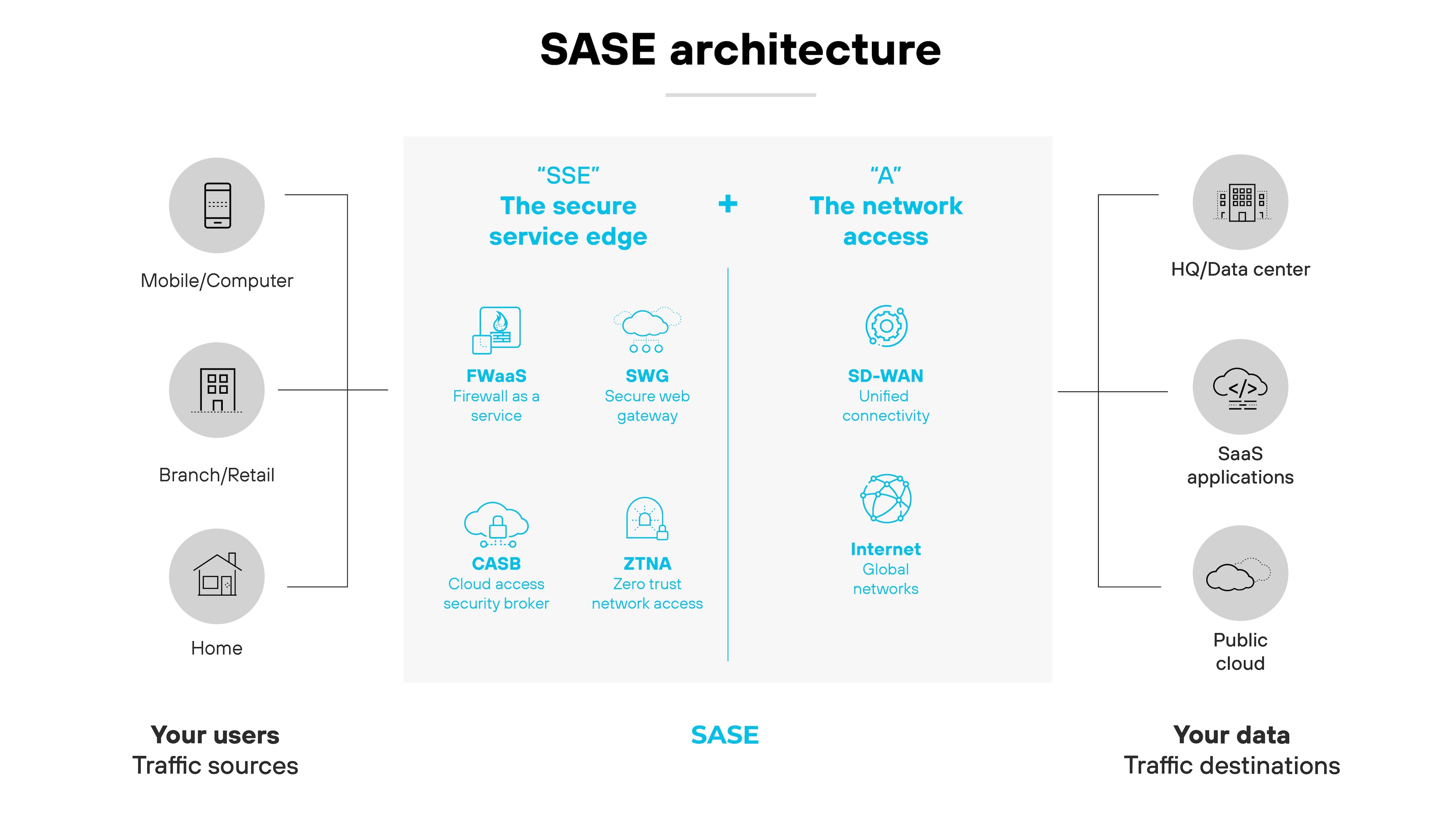
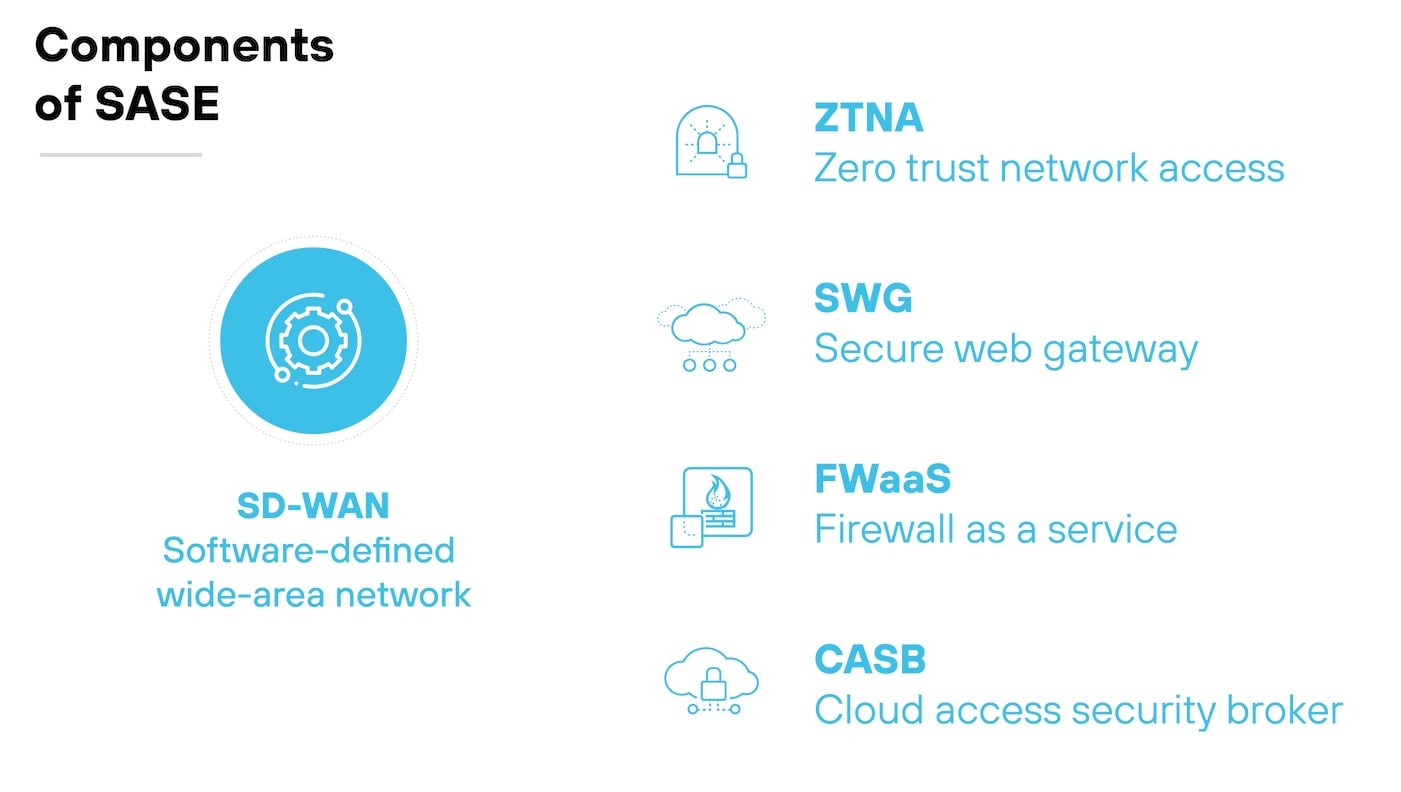
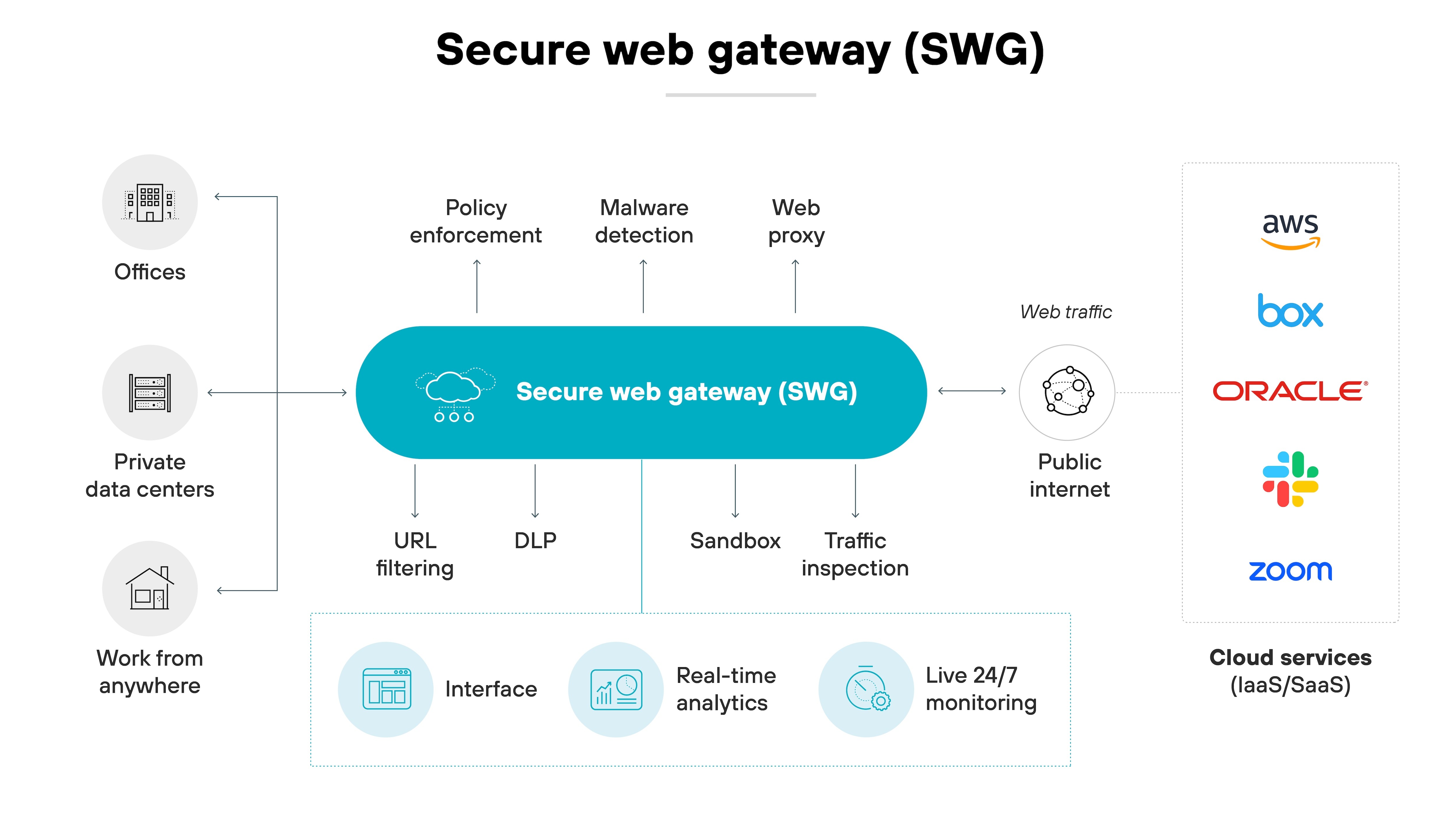

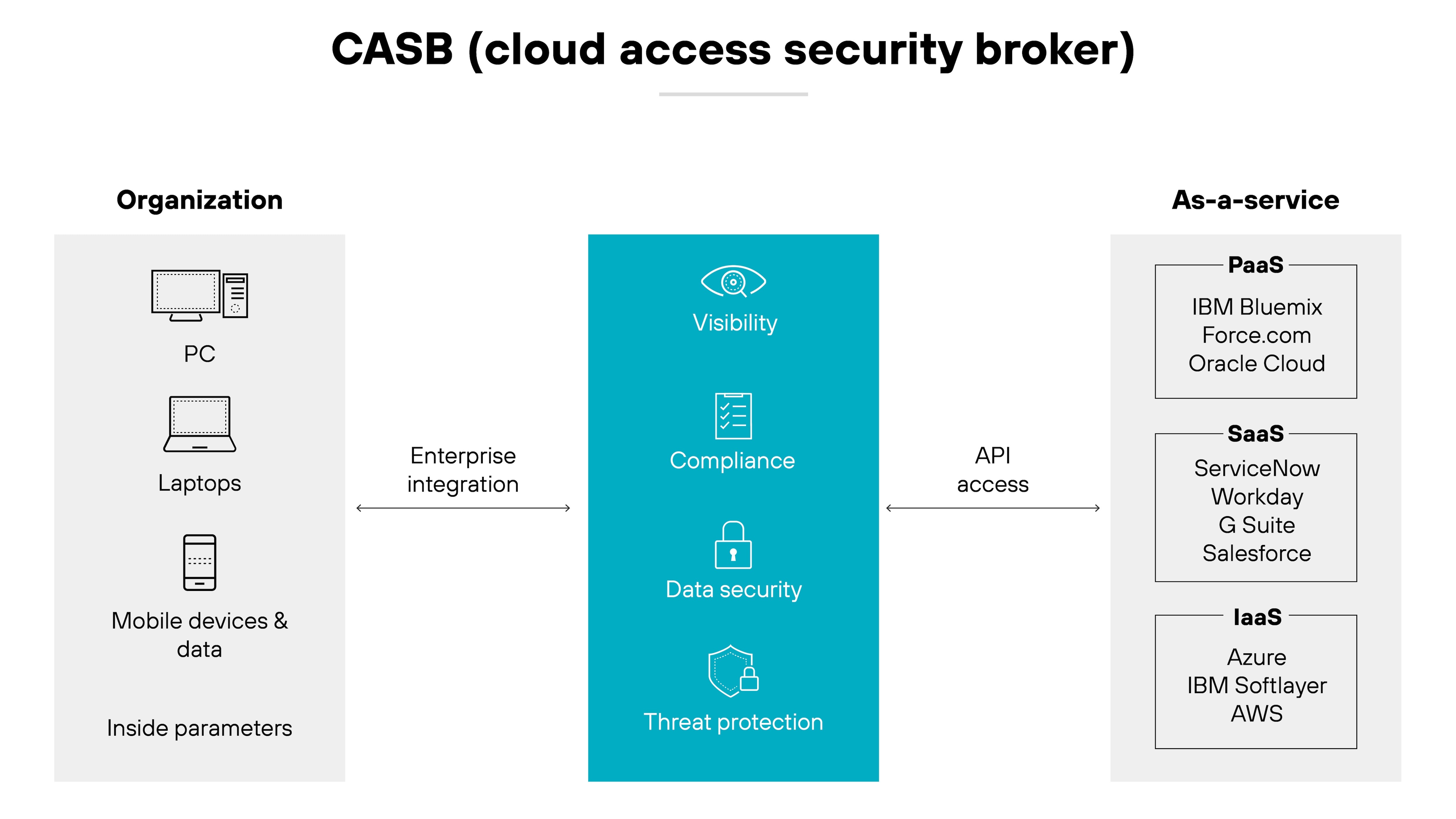
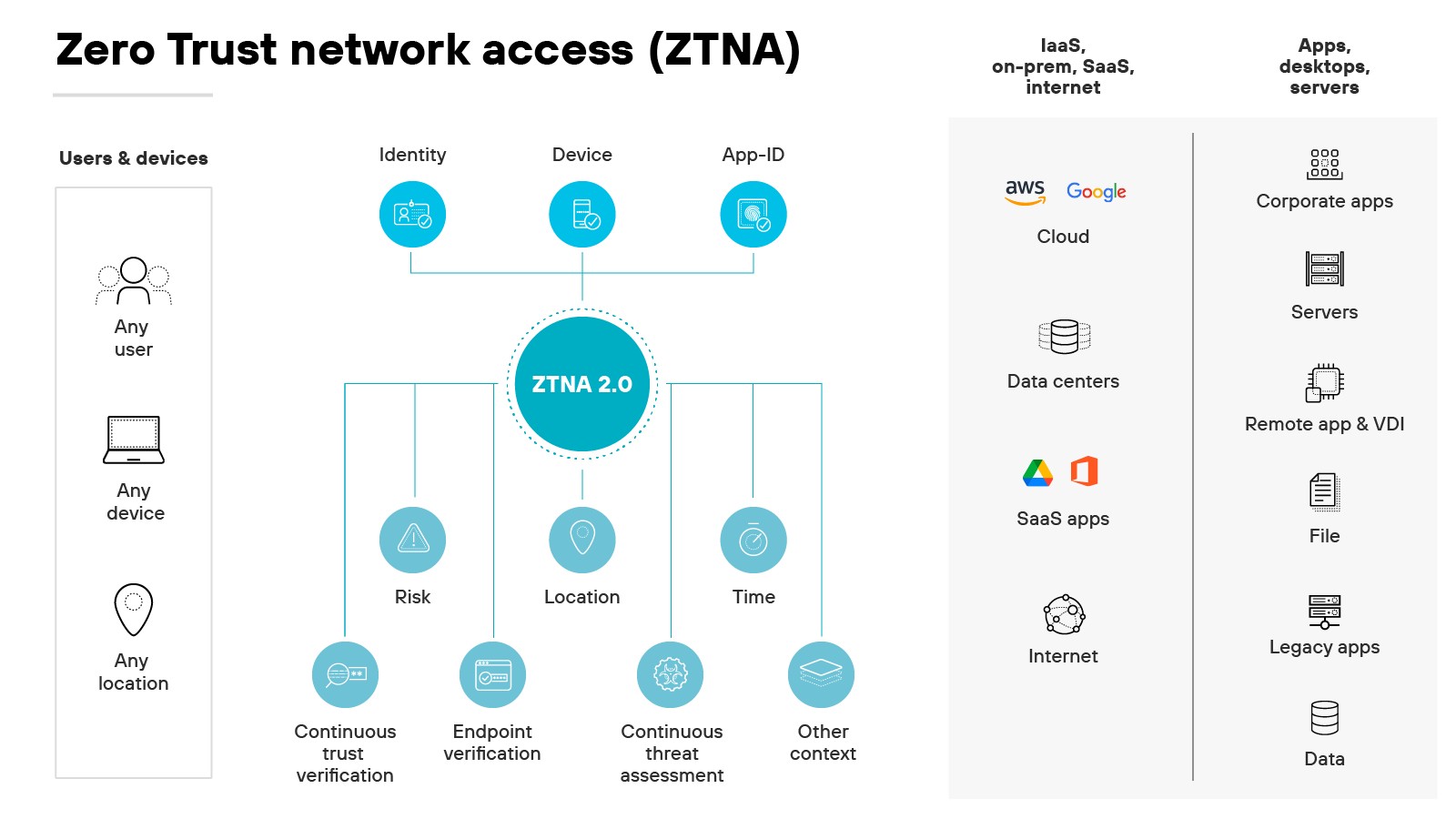
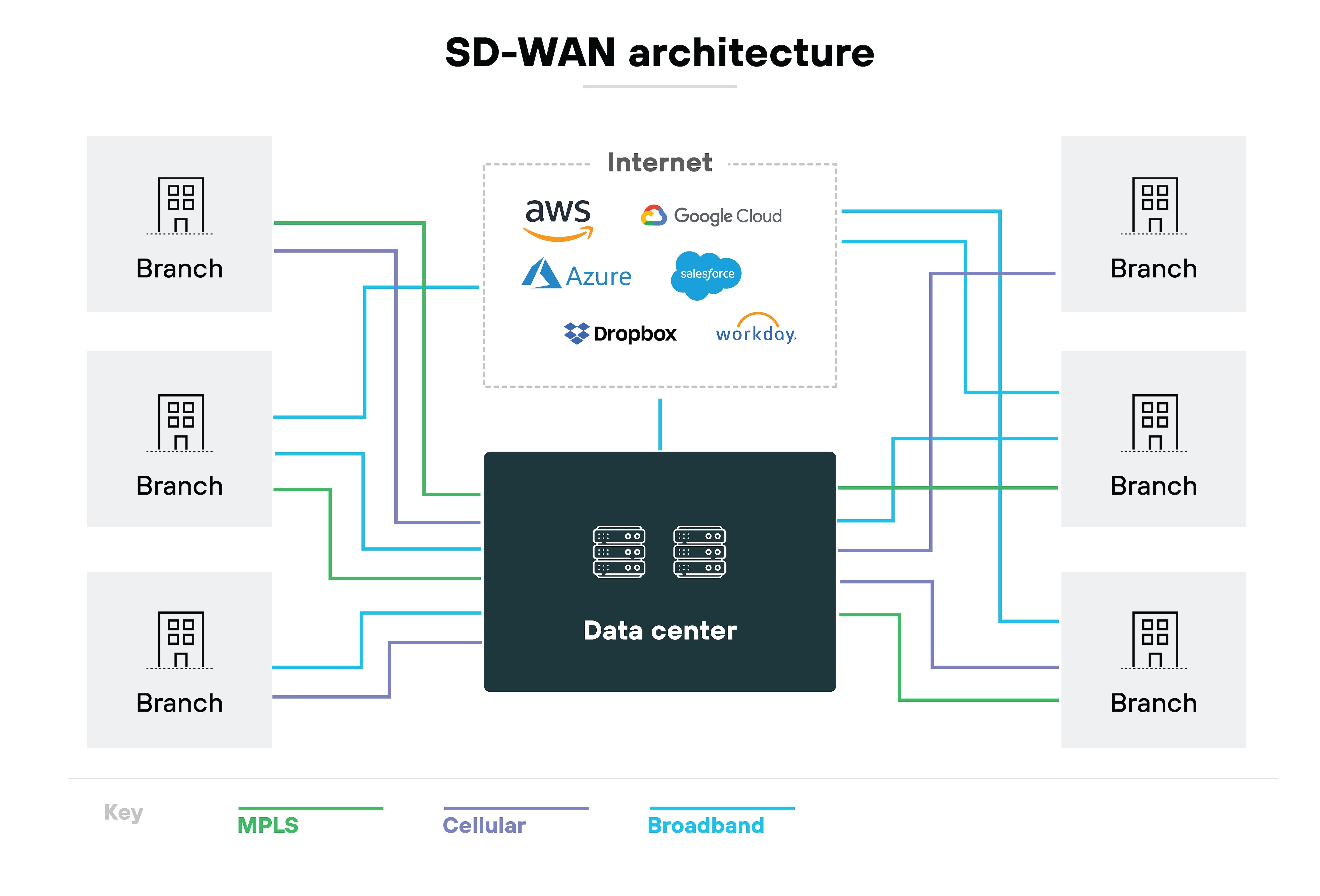
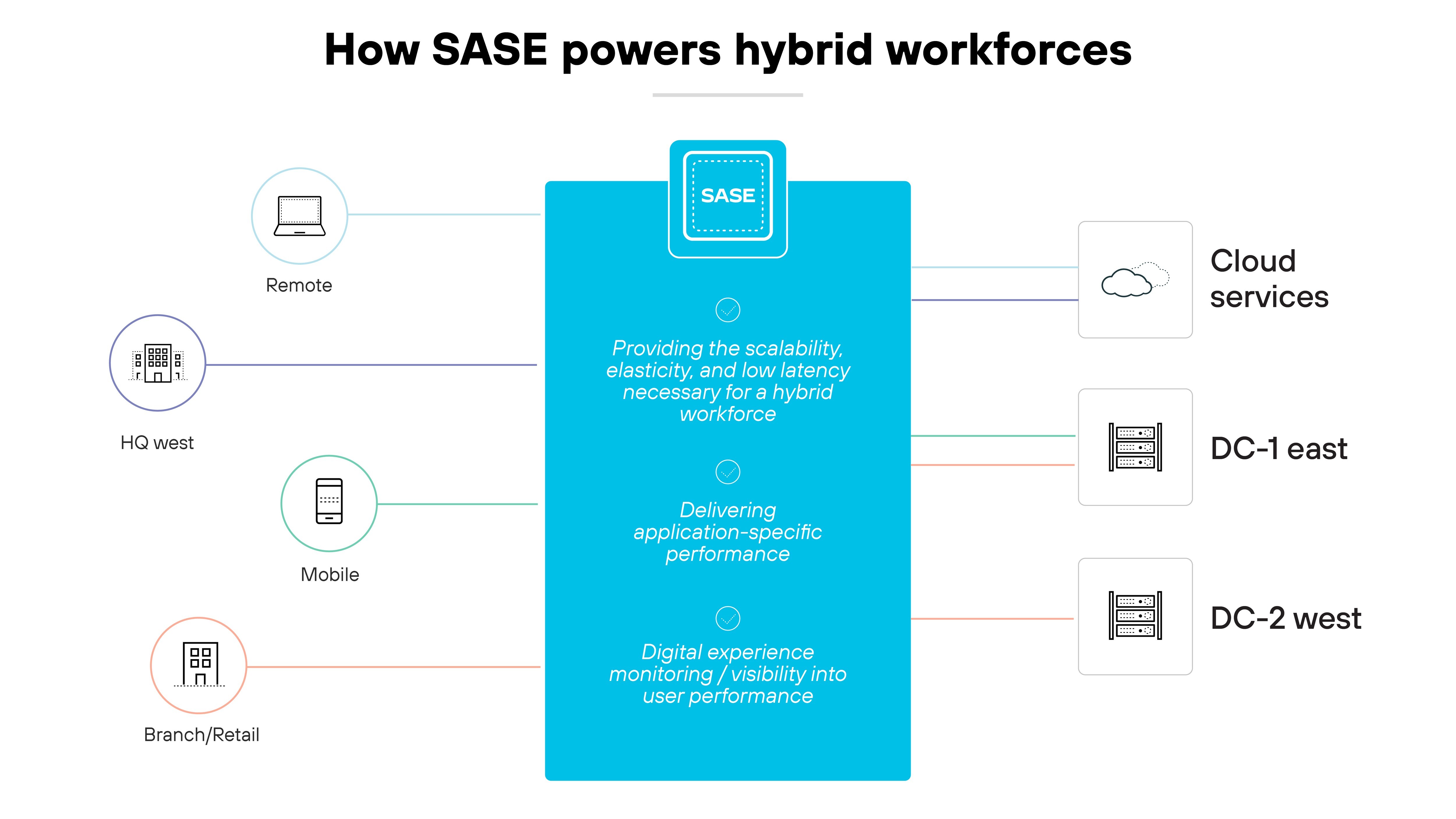


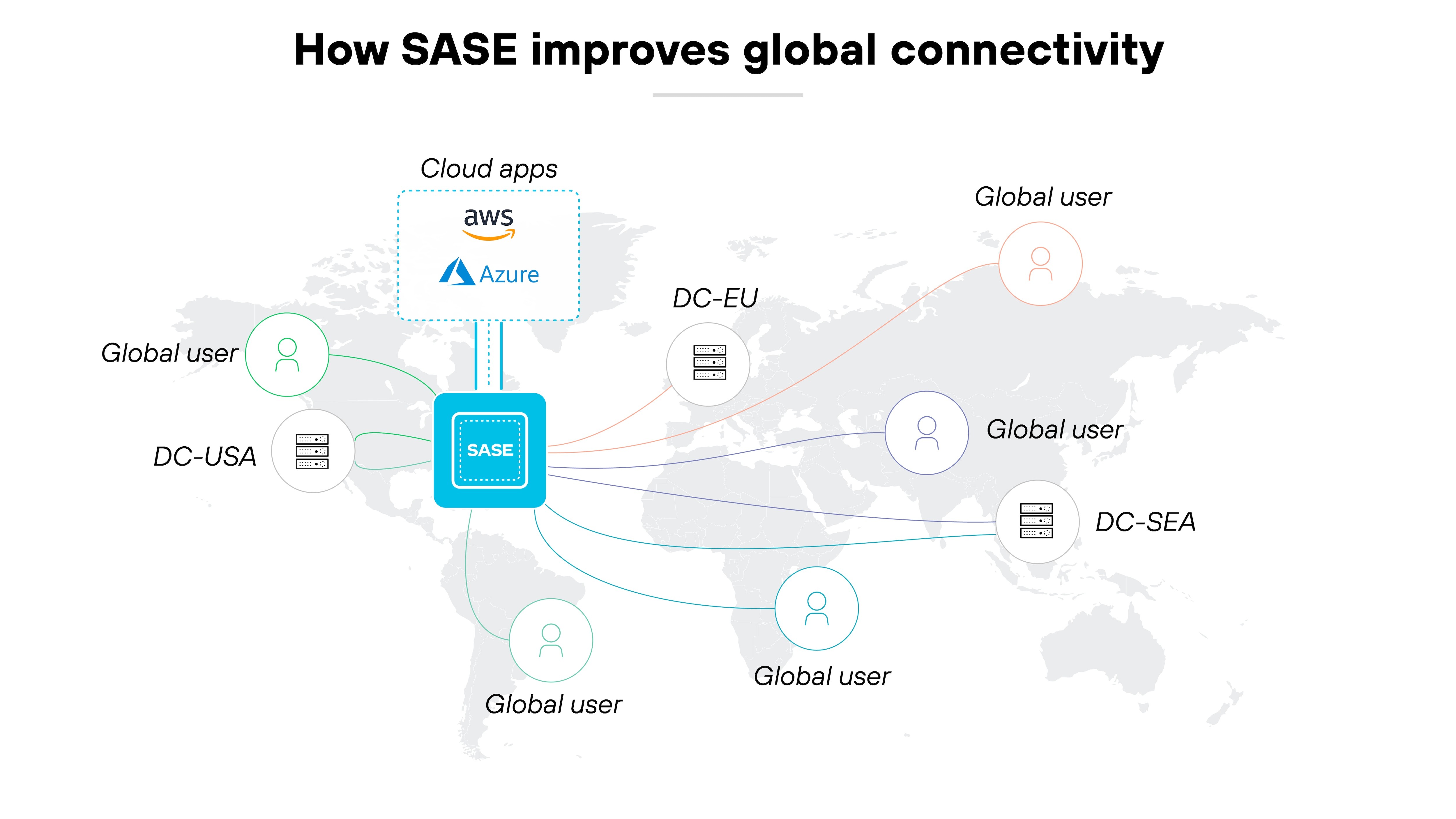
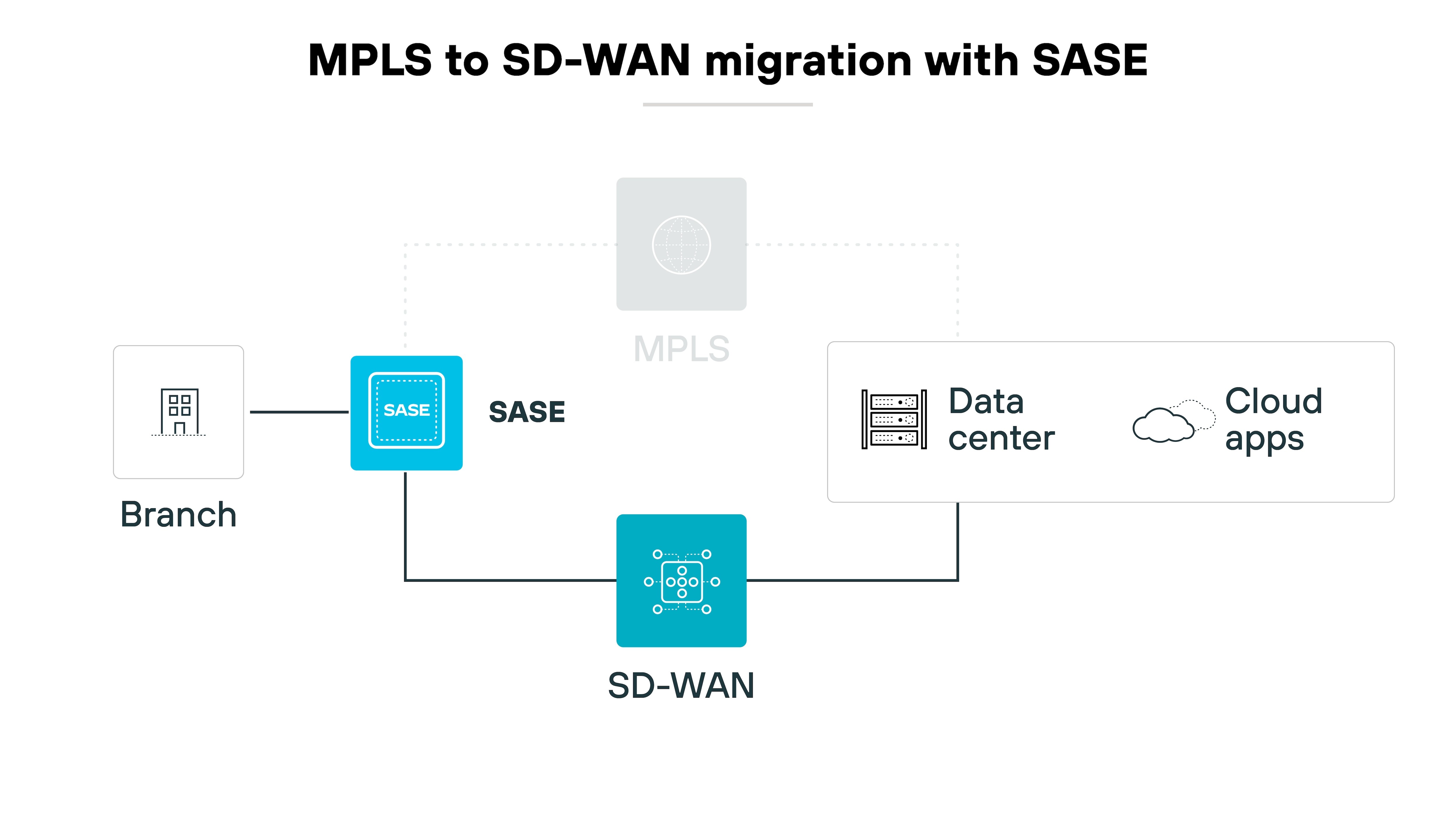
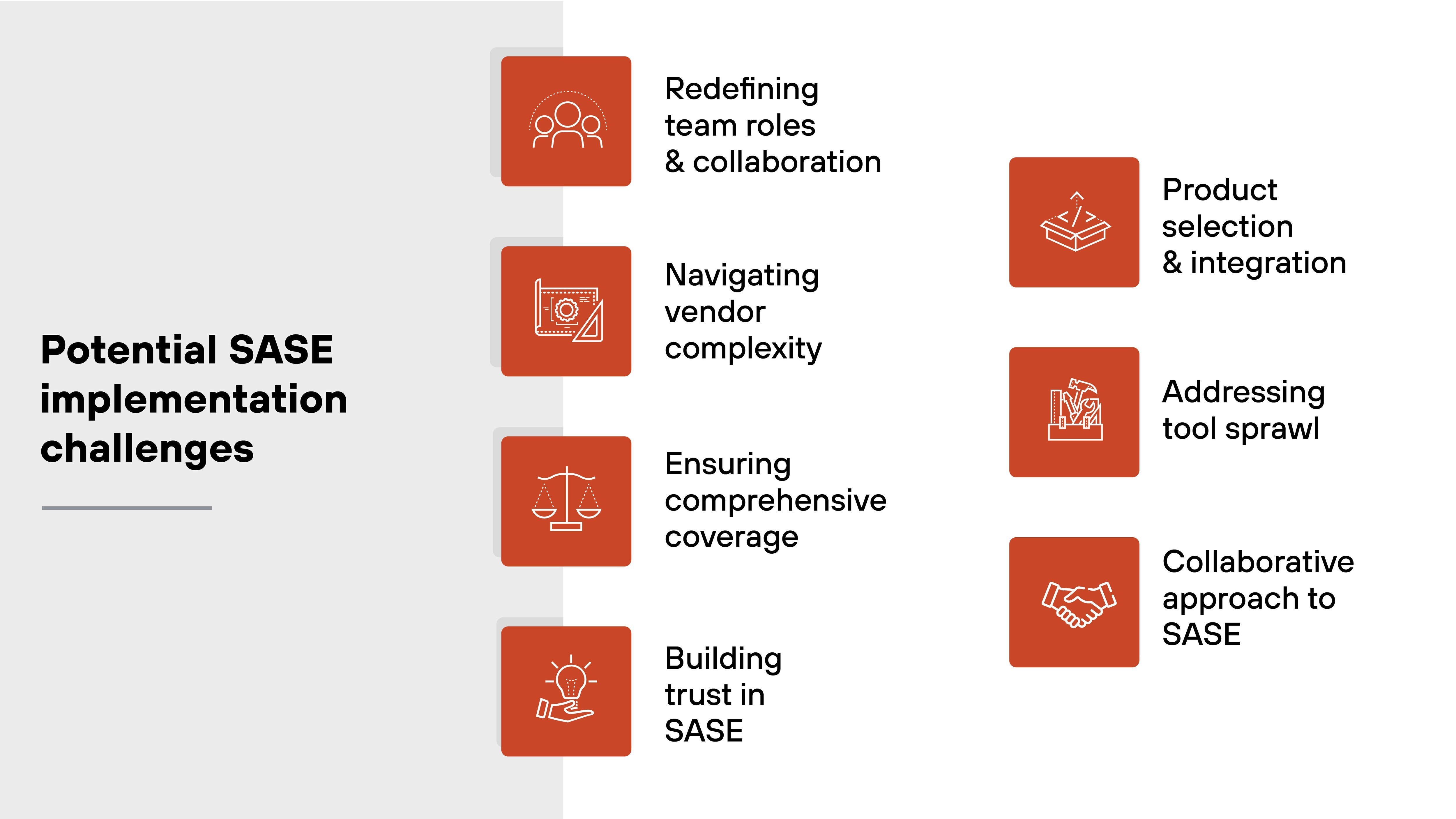
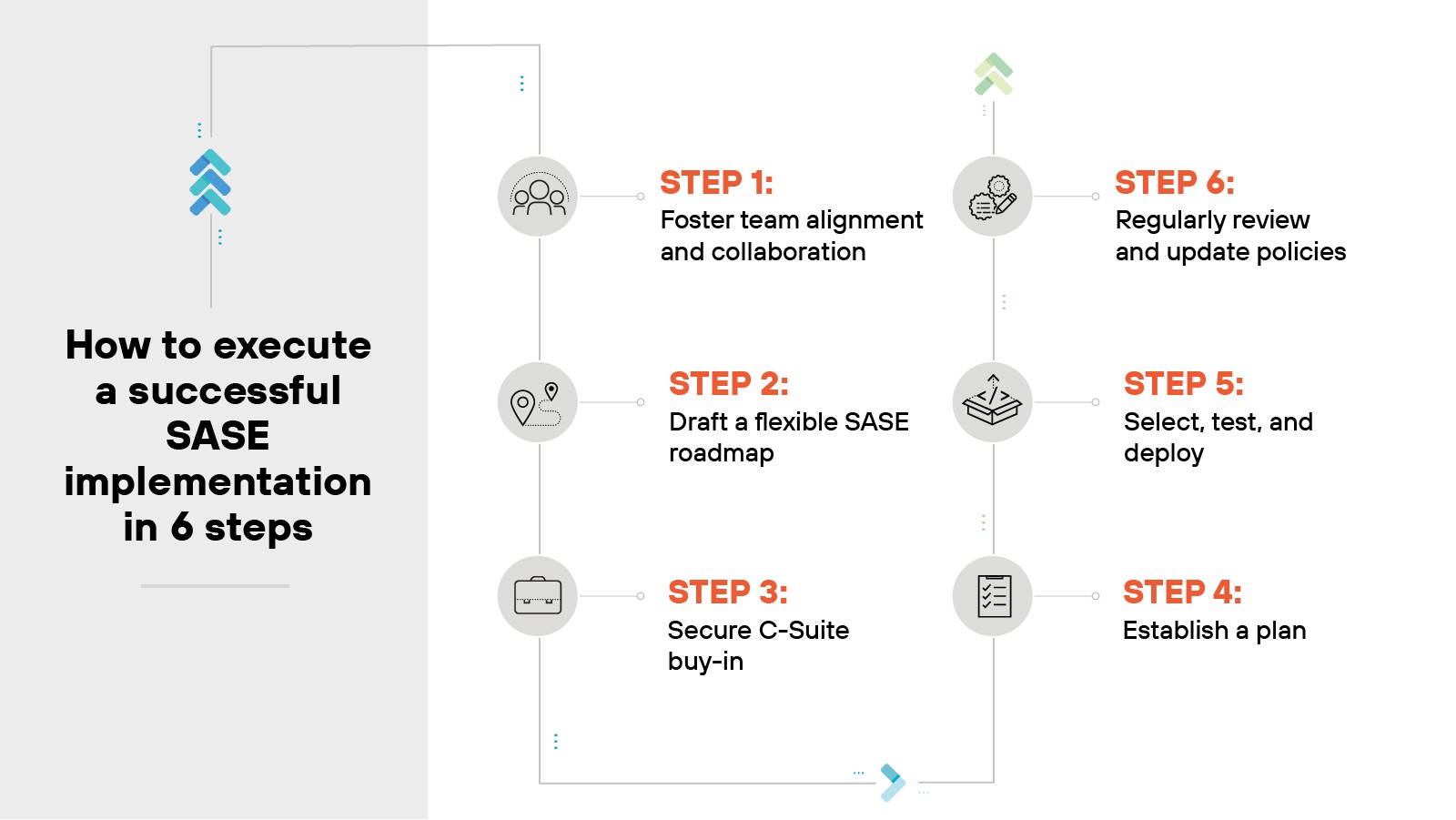
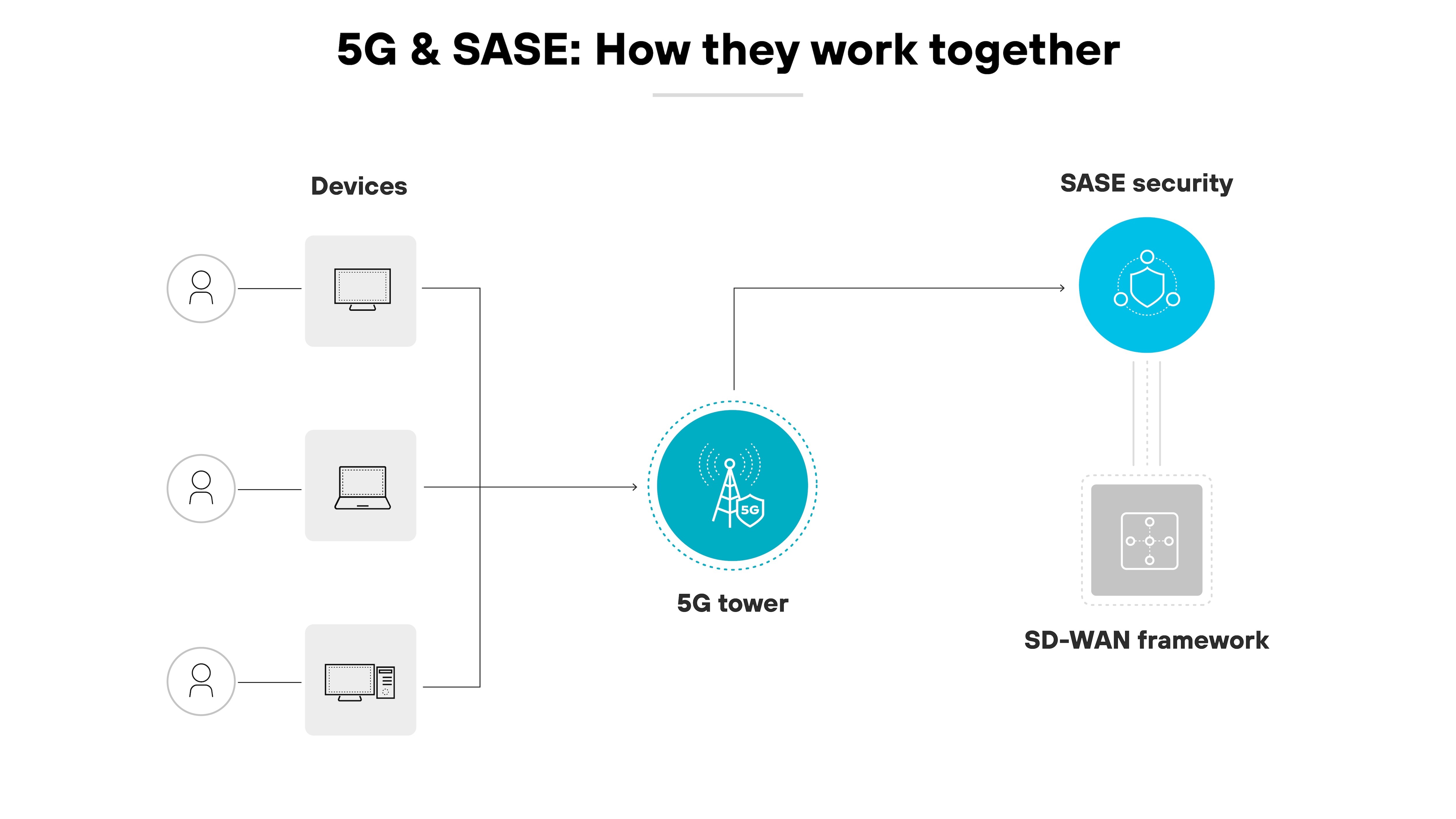
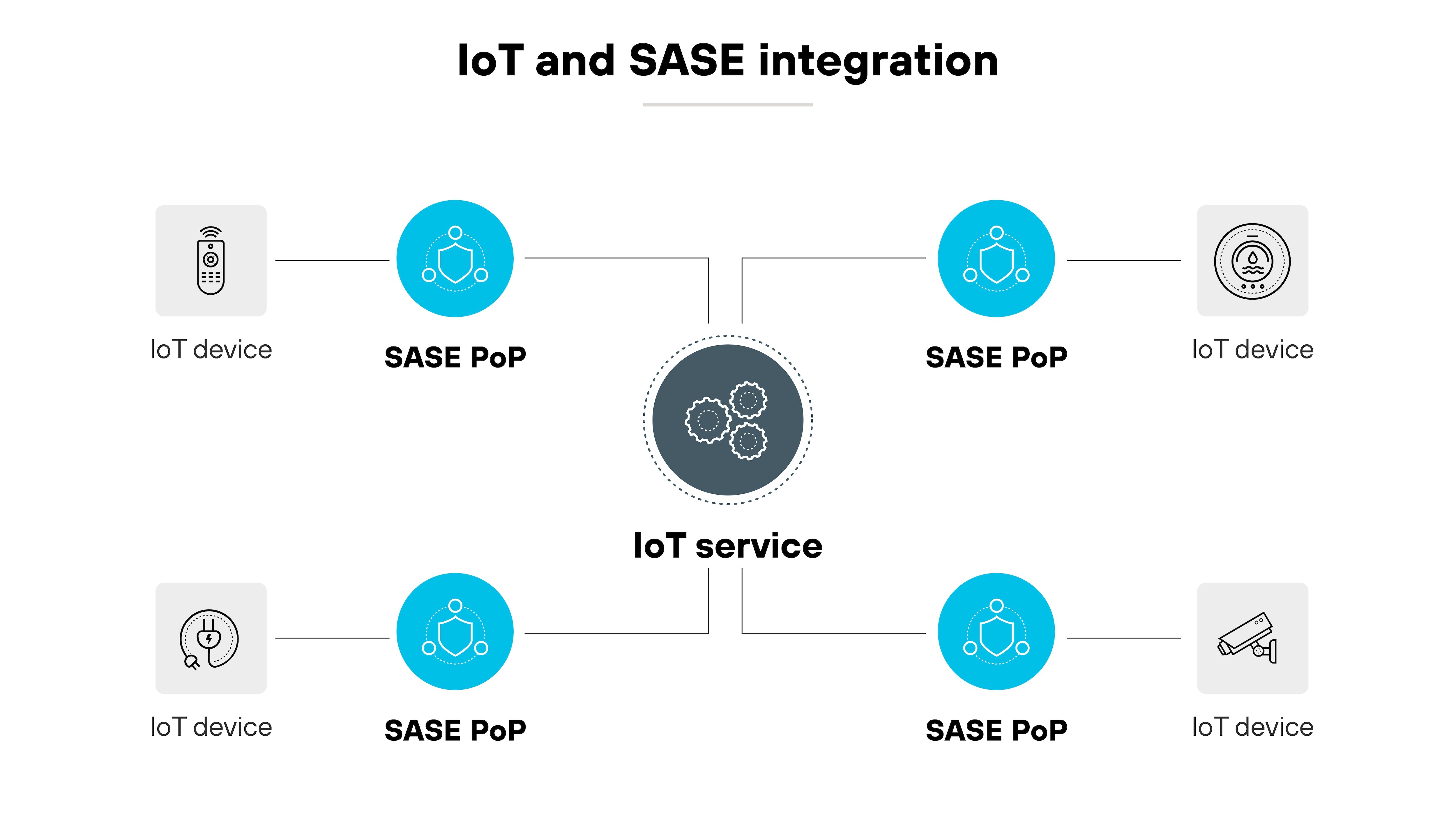
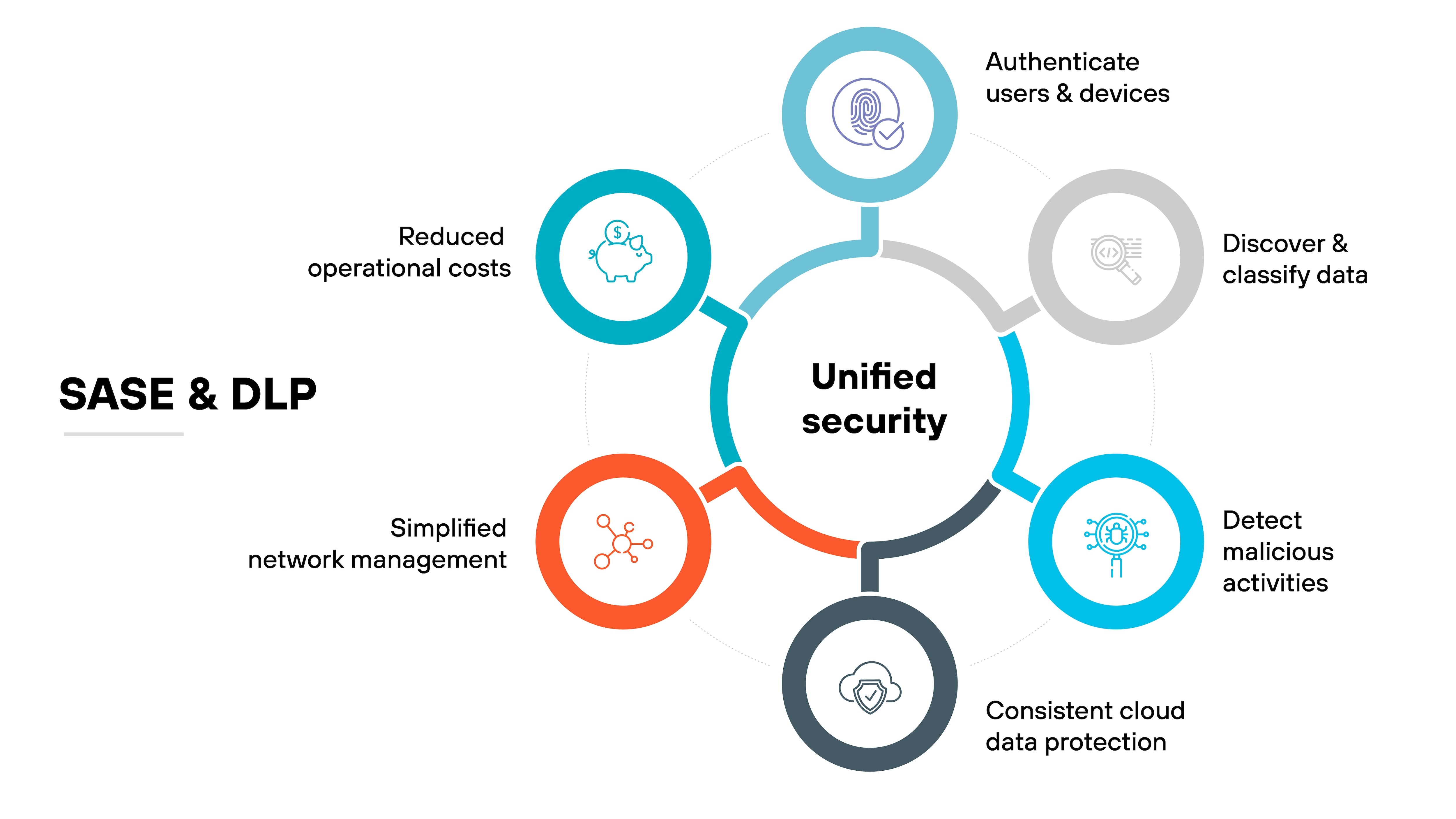
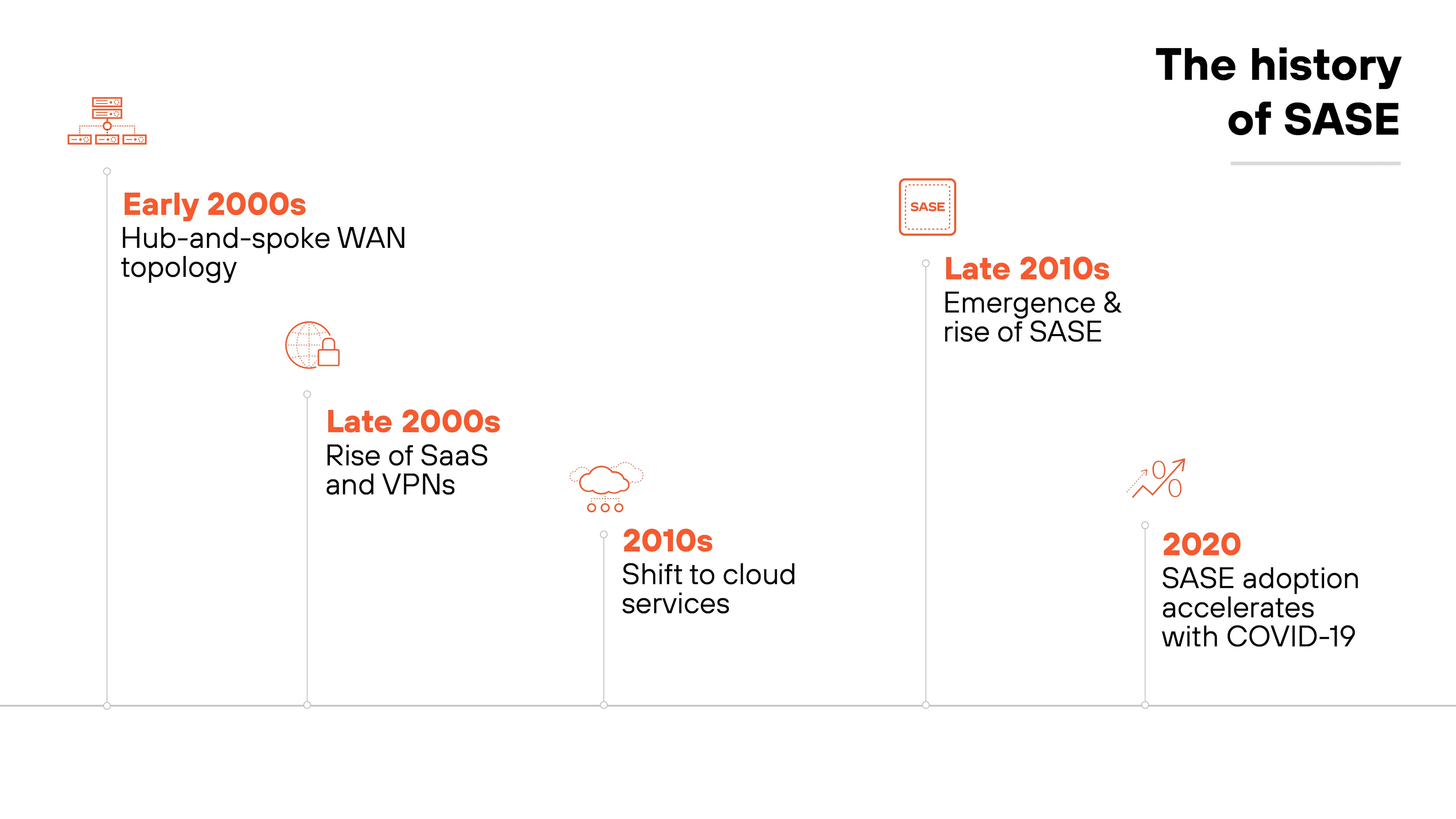
12. A Brief History of SASE
- Early 2000s: Hub-and-spoke WAN topology
- Late 2000s: Rise of SaaS and VPNs
- 2010s: Shift to cloud services
- Late 2010s: Emergence & rise of SASE
- 2020: SASE adoption accelerates with COVID-19
13. SASE FAQs
| Question | Answer |
|---|---|
| What is SASE? | Secure access service edge (SASE) is a cloud-native architecture that unifies SD-WAN with security functions like SWG, CASB, FWaaS, and ZTNA into one service. |
| What is the difference between SD-WAN and SASE? | SD-WAN optimizes and manages network connections without native extensive security, while SASE integrates WAN functionalities with a comprehensive security framework for seamless and secure connectivity across environments. |
| What are the components of SASE? | – SD-WAN – SWG – CASB – FWaaS – ZTNA |
| What are the capabilities of SASE? | The SASE framework offers a cloud-delivered networking and security infrastructure, transforming the traditional perimeter into a set of dynamic, cloud-based capabilities that simplify management and adapt to changing needs. It ensures secure access to applications, full traffic visibility, and adapts to evolving threats and business requirements. |
| When should I use SASE instead of a VPN? | While SASE offers a cloud-centric solution with dynamic policy enforcement based on user context, VPNs primarily encrypt connections, sometimes introducing latency through centralized servers. The suitability of one over the other hinges on the specific needs and context of an organization. |
| Does SASE replace VPN? | SASE does not directly replace VPN; instead, it offers a cloud-centric solution with enhanced features such as dynamic policy enforcement based on user context. While VPNs focus on encrypted connections through centralized servers, SASE capabilities provide a broader and more integrated approach to secure network access without the potential latency of centralized servers. |
| What is the difference between a firewall and SASE? | Firewalls act as gatekeepers using set rules to control traffic, while SASE is a cloud-native framework offering a broader array of security functionalities. |
| Does SASE include SD-WAN? | Yes, SASE typically includes SD-WAN as one of its components. The SASE framework integrates various networking and security functions, with SD-WAN being a key component for optimizing and managing distributed network connections within this unified cloud-based platform. |
| What is the main goal of SASE? | The goal of SASE is to provide an integrated, cloud-native framework that seamlessly combines network optimization and security services, enabling secure and efficient access to resources regardless of user location or the location of the applications and data they’re accessing. |
| Is SASE just a proxy? | SASE is not merely a proxy. While SASE architectures often incorporate secure web gateways, which can function as proxies, SASE is delivered as a broader framework that combines various network and security functions in a cloud-native platform. |
Navigating the complexities of network security can be challenging, but WHAT.EDU.VN is here to help. Do you have more questions about SASE or other tech topics? Don’t hesitate to ask us anything! We provide fast, free answers to all your questions. Contact us today at 888 Question City Plaza, Seattle, WA 98101, United States, or reach out via WhatsApp at +1 (206) 555-7890. You can also visit our website at what.edu.vn for more information. We’re here to make learning easy and accessible for everyone. Ask your question now and get the answers you need!